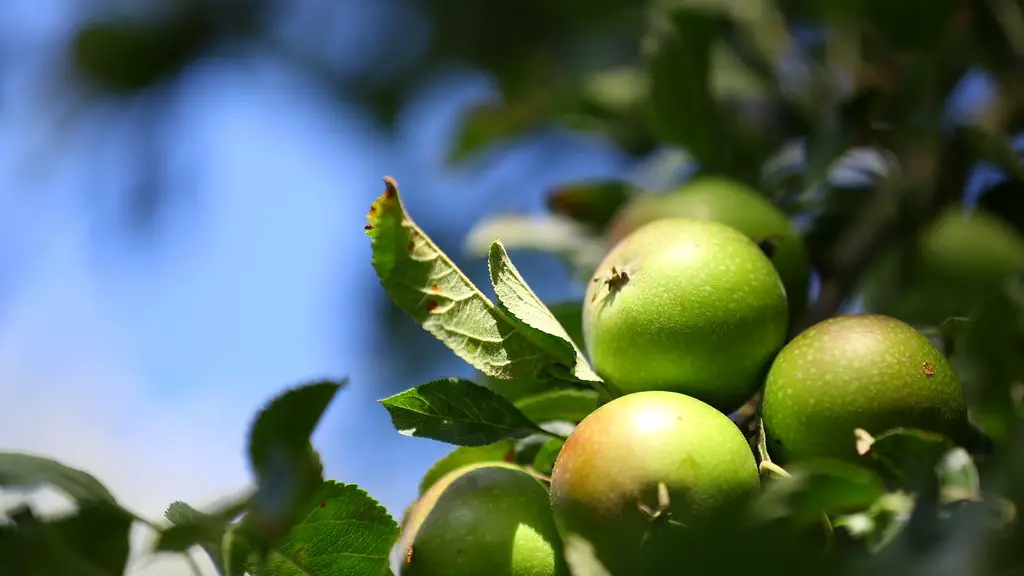Lemon trees are a great way to enhance a garden, porch, or patio. Not only do they provide a beautiful look, but they also provide loads of luscious lemons! But before planting a lemon tree, it’s important to consider the best place to do so. With its acidity and ability to thrive in a hot, Australian climate, a lemon tree needs the perfect spot for optimal growth and success. So, where’s the best place to plant a lemon tree?
When selecting a location for the lemon tree, it’s best to choose an area that receives plenty of sunlight. Lemon trees prefer full to partial sun and need at least 6 hours of direct sunlight each day. If a tree is planted in a shady area, it won’t get as much nutrition and may not produce as many lemons.
Before proceeding, it’s important to make sure the selected spot isn’t too close to buildings and other objects like pools and pools. That’s because lemon tree roots grow wide and large and can damage any nearby structures. A good rule of thumb is to plant the tree no closer than four to six feet away from other objects.
When it comes to soil type, lemon trees don’t like soil that’s too heavy or wet. Soil should be slightly acidic, with a pH level of 5.5-6.5. It’s also best to avoid planting a lemon tree in soil that’s too dry, as this can cause the tree’s leaves to yellow. Additionally, the soil should be well drained so the roots don’t sit in soggy water for extended periods.
Finally, it’s important to keep the tree well-watered after planting. Lemon trees require regular watering throughout the year, with a once-a-week deep soaking in warmer months to help keep it healthy. Deep soaking encourages the roots to grow deeper and helps to keep the tree well hydrated rather than shallow surface irrigations.
Fertilizer
Fertilizing a lemon tree is important in order to achieve the best results. Fertilizing once a month with an organic fertilizer that’s balanced should help to promote healthy fruit production and foliage. Avoid over-fertilizing because this can result in less fruit and may burn the tree’s foliage. Fertilizing should be done in the spring and summer, as most lemon tree varieties don’t produce fruit in the winter months.
Growth
Unlike other citrus trees, lemon trees tend to have quite a slow rate of growth. As a result, they require minimal pruning in order to encourage healthy growth. Pruning should only be done in the winter months and should focus on removing any dead or damaged branches. It’s important not to prune too much as this can reduce fruiting.
Pests & Diseases
When it comes to pests and diseases, lemon trees aren’t immune. They are vulnerable to a number of problems, including citrus canker, citrus leaf miner, and spider mites. To prevent these, it’s important to monitor any signs of pests and diseases, and take action as soon as any issues are spotted. Common pest control measures include using horticultural oils and soaps, and organic insecticides.
Harvesting
Harvesting a lemon tree is one of the most rewarding tasks. Once the fruits start to ripen, they should be harvested as soon as they reach their full size. Lemons that have fallen to the ground should be picked up as soon as possible to prevent any pests or diseases that may affect the entire tree. It’s best to pick lemons with gloves and pruning shears in order to avoid any damage to the tree.
Pollinators
Lemon trees require pollinators such as bees in order to produce lemons. If possible, it’s best to encourage pollinators such as bees to visit the lemon tree by providing a source of food such as nectar or pollen. Planting flowers close to the lemon tree can also help to attract pollinators which are essential for efficient pollination.
Winter Care
Caring for your lemon tree during the winter months is of utmost importance. When temperatures drop and the days become shorter, it’s important to ensure that the tree’s needs are met. This includes ensuring that the tree is kept well-watered and out of the cold winds. Additionally, it’s important to cover the tree when frost is expected as this can damage the lemons and leaves. Caring for a lemon tree during the winter months can help to ensure a successful harvest come spring.

